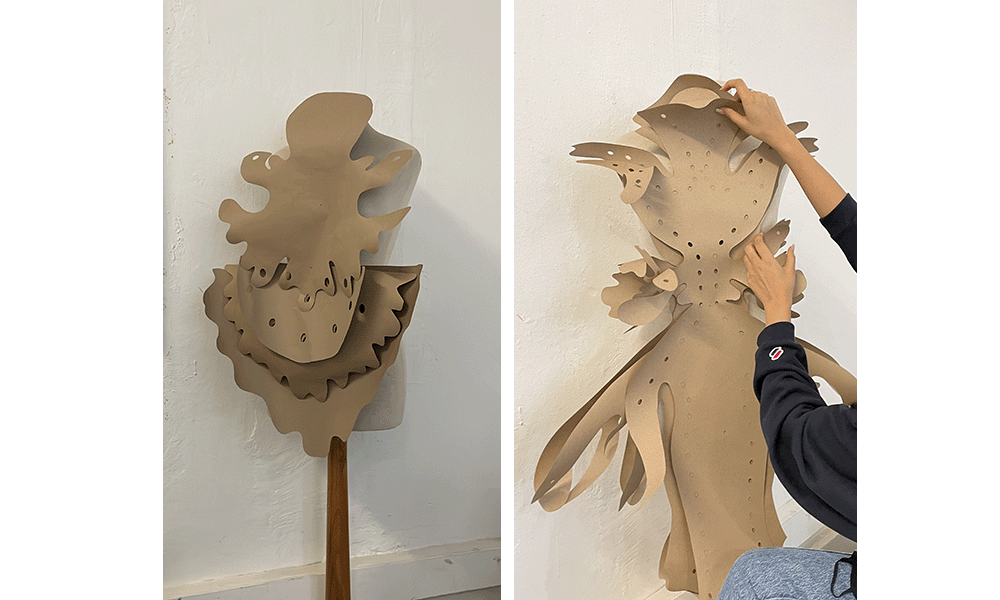Prototyping
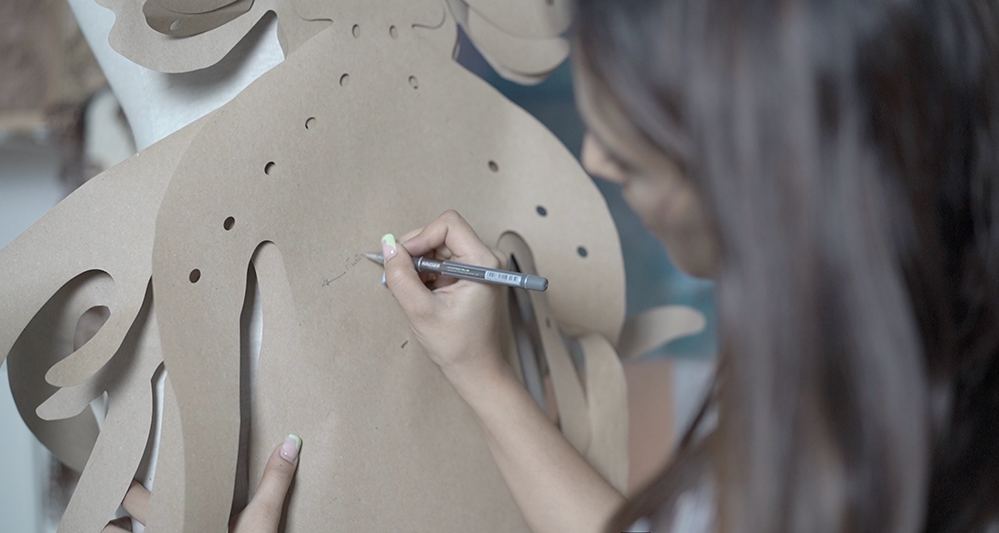 In the design world, it is very important to do make prototypes, to spot errors and rectify them so that the final product is professional.
In the design world, it is very important to do make prototypes, to spot errors and rectify them so that the final product is professional.
Small scale prototyping¶
Specially for this project, it was really important to start with small scale prototyping because I had no experience in working with such materials and silhouttes, I wanted this collection to be inconventional, a display of art. So I started with dressing up my dolls, using paper and biomaterial samples I started cutting my patterns and sticking it onto each other using double sided tapes. But obviously the material used was different, and the stability of the form varies from small scale to the bigger scale. Here in the first garment, I wanted the sheets to stand and cover the face, It was easy to achieve with paper but I was sceptical about biomaterials.
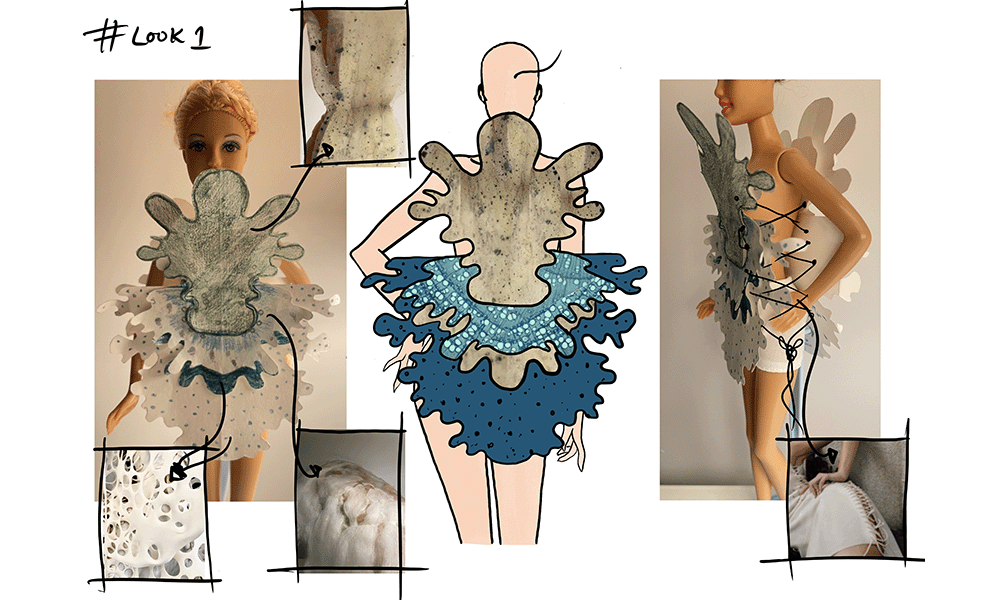
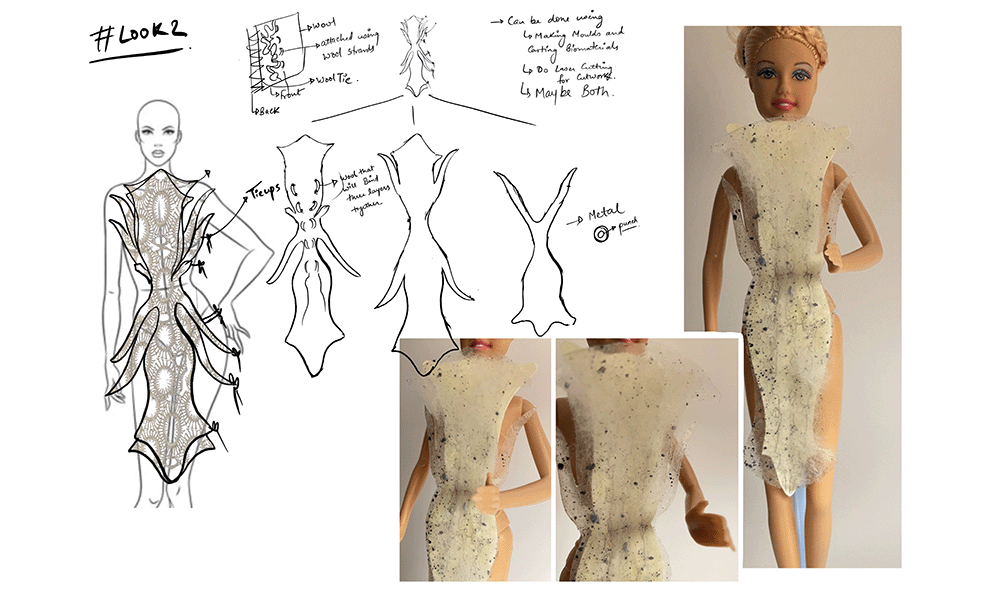


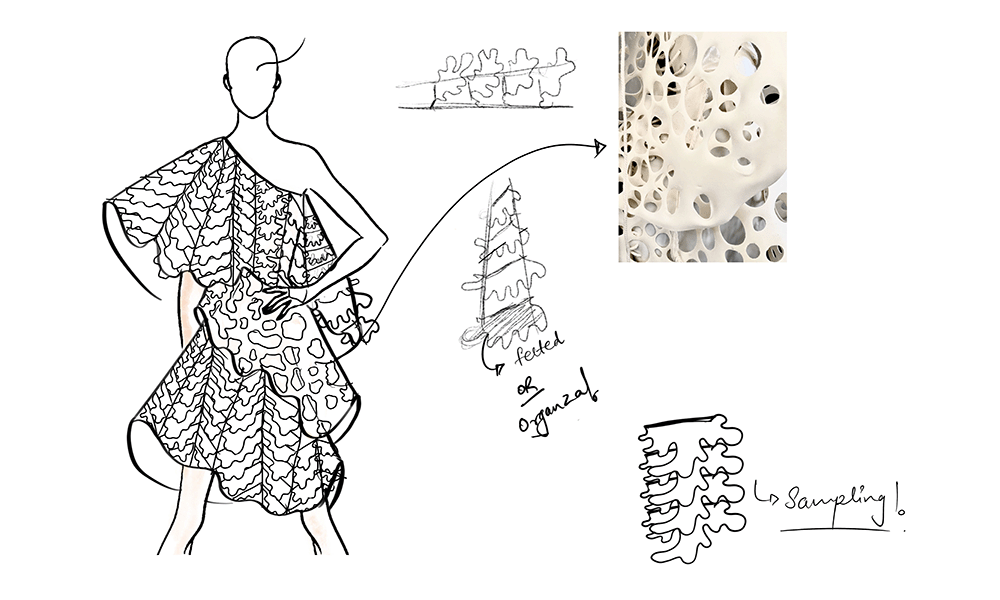
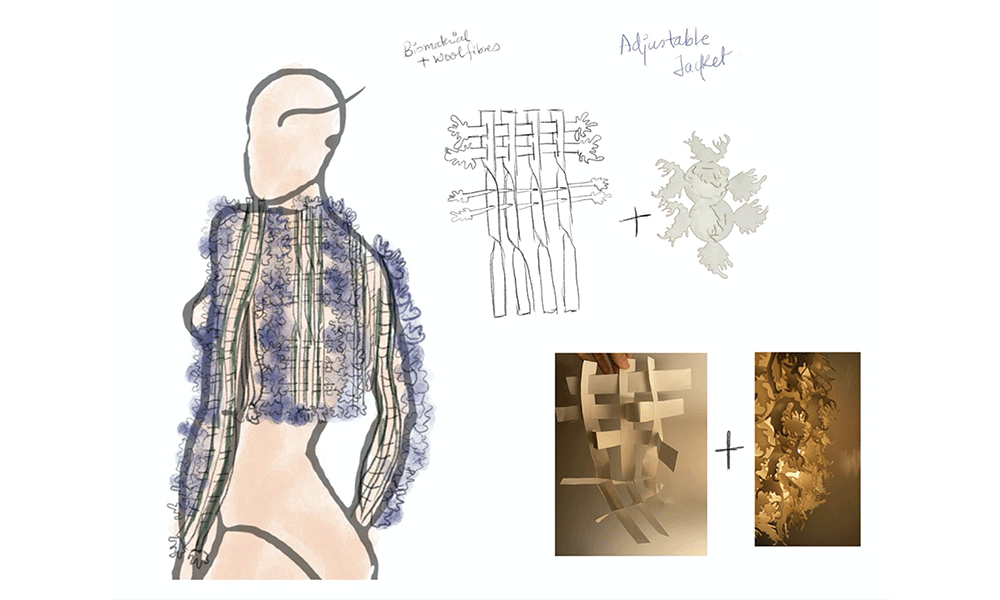
Digital pattern making¶
I still wanted to try the same forms with biomaterials, so I proceeeded with making my pattern on procreate, I created a skeleton mannequin with body measurements and dividing a line into body ratios. Then drawing the desired forms onto it with holes to assemble them with each other.


Large scale prototyping¶
After drawing the patterns, I converted it from .jpg to .ai form and then imported it to rhino for laser cutting. Here I used pattern making paper to test. I realised that the holes were not aligning properly with each other and there were some danger areas which were very thin so I changed it.
- While laser cutting patterns onto light weight material like paper, always remember to change settings such that inner patterns are cut first and then the outer pattern so that the material doesn't move and it's hassel free. You can see detailed laser cutting process in the fabrication section of this documentation.
